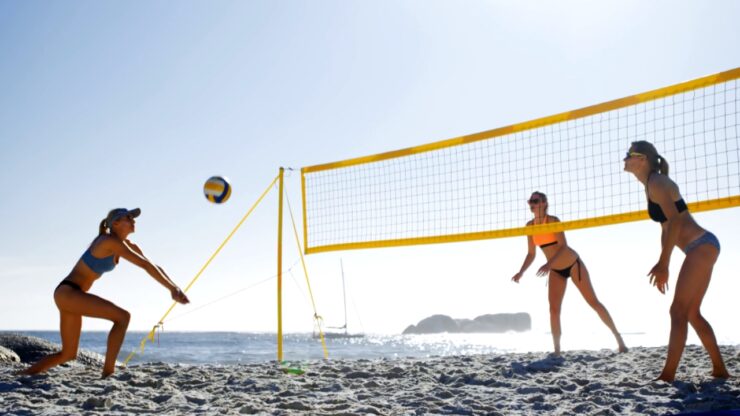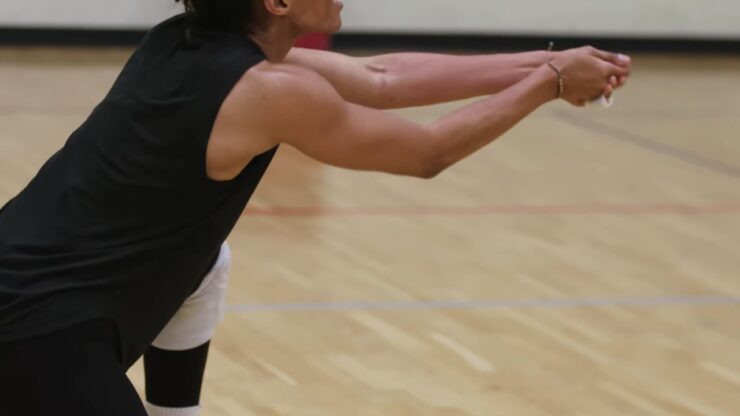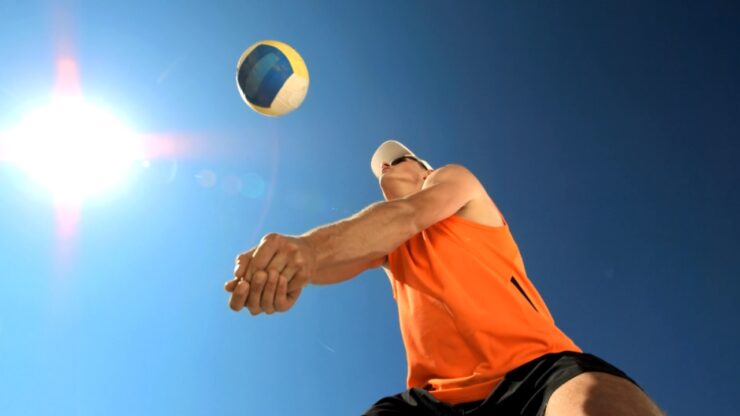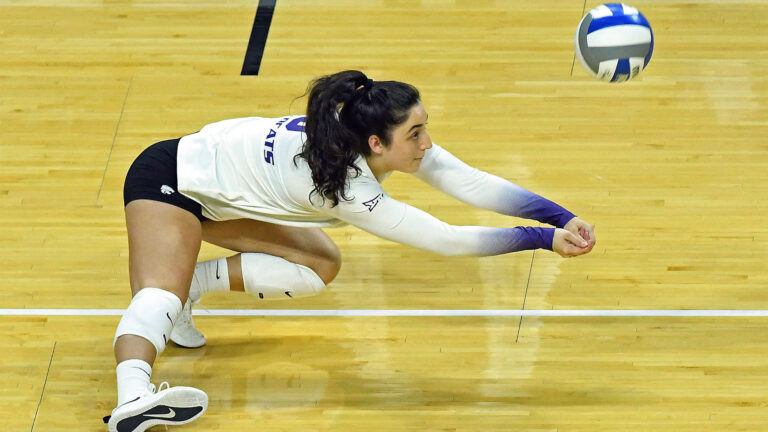Dive headfirst into the high-energy world of volleyball, and you’ll find yourself entranced by the sheer dynamism of the game. Swift movements, strategic plays, and precision hits define the essence of the sport, which, at its core, is a beautiful display of teamwork and athletic prowess. Yet among the manifold aspects of volleyball, there’s one maneuver that is often underappreciated yet vital for the game’s progression – the ‘Dig.’
The Dig, usually eliciting gasps from the audience, is a spectacular defensive play that allows a team to turn the tables and transition into offense seamlessly. Not only does it protect against powerful attacks, but it also initiates counter-attacks and keeps the rally going.
Delving deeper into the game’s dynamics, we understand that the essence of volleyball lies in its unpredictability. The Dig acts as a saving grace, swooping in when the ball is rocketing toward the floor. To fully grasp the importance of the Dig, let’s take a journey through its purpose, execution, variations, and some strategies to master it.
The Definition of a Dig

So, what exactly is a dig in volleyball? The dig is a defensive move employed when a player passes a hard-hit attack from an opponent that’s close to the ground. The aim is to prevent the ball from touching the floor on your side, intercepting it in the nick of time, and propelling it towards a teammate to set up a counter-attack.
But the dig is not just about salvaging the ball from certain doom; it plays a pivotal role in determining the rhythm and trajectory of the game. A well-executed dig doesn’t just stop an opponent’s attack; it sets the stage for your team’s offensive play, thereby blurring the lines between defense and offense.
Its significance in setting up offensive plays cannot be overstated. A good dig can make or break a game, and it can be the spark that ignites a spectacular play. It shifts the game’s momentum, turning defense into offense, and transforms pressure into opportunity.
In addition to understanding the concept of a dig in volleyball, it’s essential to grasp the significance of an ace.
The Technique of Executing a Dig
When it comes to executing a dig, the primary objective is simple: keep the ball in play. However, achieving this requires a blend of anticipation, technique, agility, and quick reflexes. Even before the opponent hits the ball, players should be ready to dig. Anticipation is crucial.
To prepare for a dig, players adopt a low stance, knees bent, weight on the balls of their feet, and arms out in front. This stance, known as the ready position, allows for quick, agile movements in any direction. The player must stay balanced and light on their feet, ready to explode into action at any moment.
The dig’s execution involves several steps. First, track the ball, predicting its trajectory based on the hitter’s approach, arm swing, and point of contact. Second, engage your footwork, moving quickly to position yourself in the ball’s path. The aim is to get under the ball and use your platform (formed by joining your forearms together) to contact the ball. Lastly, direct the ball towards a target, usually the team’s setter, by angling your platform and using your legs and shoulders.
Key Skills and Strategies for Effective Digging

Anticipation and reaction time are key to a successful dig. Players must be able to read the game, predicting the opponent’s attack direction based on their body language, position, and approach. A split-second delay in the reaction can be the difference between a successful dig and a failed one.
Equally important are quick reflexes and agility. Volleyball is a fast-paced game, and the ball can move at incredible speeds. Players need to be agile, able to move quickly, and change direction swiftly. It’s not just about getting to the ball; it’s about getting there in time to position your body correctly for the dig.
Good body positioning and balance are crucial. While you need to be low to the ground to dig effectively, maintaining balance allows you to move swiftly and react quickly. Remember, a dig isn’t just about stopping the ball; it’s about controlling it, setting it up for the next player. Finally, communication within the team is essential. It coordinates movements, avoids collisions, and ensures that every player knows their role in the defensive strategy.
Volleyball players often aim to achieve a successful defensive play known as a dig, while another term commonly encountered in the sport is “sideout,” which carries its own significance in the game.
Variations and Techniques
There are different types of digs in volleyball, each with its own purpose and technique. The forearm pass, or bump, is the most common type of dig. Here, players use their forearms to contact the ball, guiding it toward a teammate. Another fascinating technique is the ‘pancake’, where players lay their hands flat on the floor just before the ball lands, allowing the ball to bounce off the back of their hand.
The technique used in a dig often depends on the trajectory and speed of the incoming ball. For high-velocity attacks, the player might need to angle their platform to effectively redirect the ball. For slower attacks, the player might have more time to position themselves under the ball for a more controlled pass.
Each digging technique has its pros and cons. While the forearm pass offers more control, it requires excellent reflexes and body control. The pancake, on the other hand, can be an effective last-ditch effort to save the ball but offers less control over where the ball will go next.
Volleyball games can vary in duration depending on factors such as the competitiveness of the teams, skill level, and the intensity of the play.
Common Mistakes to Avoid
Several common mistakes can hinder the effectiveness of a dig. First, players often stand too upright, which reduces their agility and ability to reach low balls. Maintaining a low, ready stance throughout the game can help mitigate this issue.
Another common mistake is swinging the arms while digging. This can cause the ball to fly unpredictably. It’s better to use the legs and shoulders to guide the ball, keeping the platform stable. Lastly, players sometimes watch the hitter instead of the ball, causing them to react too late. Always keep your eye on the ball, using peripheral vision to monitor the hitters.
Training Drills and Exercises
Drills and exercises that improve reflexes, agility, and body control can greatly enhance your digging skills. The ‘Pepper’ drill, involving two players passing, setting, and hitting the ball to each other in a continuous cycle, is an excellent drill for improving digs. ‘Butterfly’ drills, where multiple players pass, set, and hit in a rotation, can also be beneficial.
Balance exercises, such as single-leg stands or Bosu ball exercises, can help improve stability and body control, which are crucial for executing effective digs. Plyometric exercises, such as box jumps or burpees, can enhance your agility and quickness.
Teamwork-oriented drills, like the ‘wave’ drill where players must work together to keep the ball in play, can improve communication and coordination, vital elements for a strong defensive strategy.
Final Words

Mastering the art of the dig in volleyball is no easy task. It demands agility, quick reflexes, precise technique, and excellent anticipation skills. But the thrill of making a successful dig, the roar of the crowd as the ball lifts from the ground, the satisfaction of turning defense into offense – these are moments that make it all worthwhile.
Remember, the essence of a dig lies not just in its technical execution but also in its strategic importance. A successful dig can shift the momentum of the game, offering your team a chance to transition from defense to offense.

